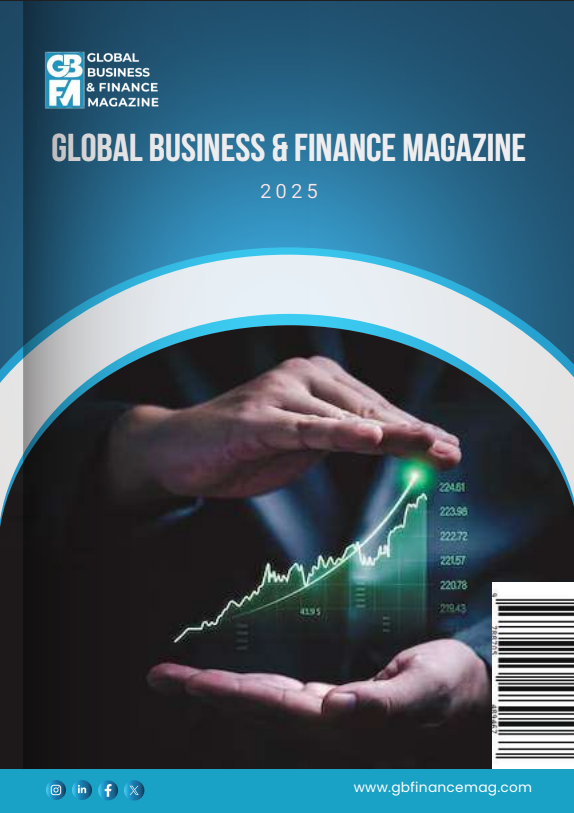In the past decade, China has become the largest creditor to developing countries, surpassing the IMF, World Bank, and Paris Club countries. This column discusses how China’s overseas lending interacts with US monetary policy – another key driver of the global financial cycle. It finds that Chinese and US policies jointly influence the level and the distribution of risk exposures in developing countries. As a result of China’s expanding role in international lending, the architecture of global financial intermediation is also undergoing a fundamental transformation, carrying important implications for the stability and functioning of the international monetary system.
Over the past 15 years, China has emerged as a major international lender to developing countries. Figure 1 illustrates the time series of China’s outstanding overseas loans. Before 2010, China’s overseas lending remained below $100 billion. It began to rise sharply in 2010, surpassing $500 billion in 2016. It reached a peak of $1 trillion in 2021, after which it declined to approximately $800 billion in 2023. Notably, from 2016 onwards, China’s overseas lending exceeded the combined official lending of the IMF, World Bank, and 22 Paris Club countries, making China the most important creditor to developing countries.
Figure 1 China’s overseas lending


Horn et al. (2021) provide a comprehensive analysis of the geographical distribution of China’s overseas lending. Figure 2 presents each country’s China debt/GDP ratio in 2015. The average China debt/GDP ratio is 7.2%. Many countries borrowed amounts equivalent to 5% to 10% of their GDP, while several countries accumulated debt ranging from 10% to 40% of their GDP. The five countries with the highest China debt/GDP ratios are Djibouti (38%), Kyrgyzstan (35%), Congo (34%), Tonga (27%), and Cambodia (27%). In terms of absolute dollar amounts, the top five borrowers are Russia ($61.43 billion), Angola ($17.50 billion), Brazil ($15.96 billion), Pakistan ($15.29 billion), and Ecuador ($10.54 billion). While major emerging countries such as the BRICS countries receive large volumes of lending from China, smaller developing countries tend to borrow more heavily relative to their GDP.
This figure also reveals that China’s overseas lending is geographically diverse, not limited to neighbouring countries, but spanning multiple continents – Asia, Africa, and South America in particular. There is also considerable heterogeneity across countries within the same region. For example, Cambodia received a lot more funding relative to its GDP than Vietnam, Peru, Colombia, Sudan, and Egypt.
Figure 2 Geographical distribution of China’s overseas lending
Notes: This figure plots the China debt/GDP ratio in 2015 across developing countries from Horn et al. (2021).
The magnitude, contractual terms, and performance of China’s lending have received a lot of attention from academic and policy researchers. In recent VoxEU columns, Horn et al. (2022) discuss the role of Russia and the war in Ukraine in China’s overseas lending portfolio; Cerutti et al. (2021) discuss the global footprint of China’s banking system, while Amendolagine et al. (2024) discuss how Chinese infrastructure lending reshapes Africa’s global value chain participation. In this column, I explore the implications of China’s overseas lending for global financial dynamics: does it give rise to any important spill-over effects on other countries’ financial conditions?
The global financial cycle
For developing countries, one of the most significant challenges is to navigate the global financial cycle, which induces strong co-movements in exchange rates, asset prices, and capital flows. As documented by Rey (2015) and Miranda-Agrippino and Rey (2015), US monetary policy plays a central role in driving this cycle. When US monetary policy tightens, foreign currencies tend to depreciate, asset prices fall, and capital inflows retrench across the globe. In response to these tightening financial conditions, developing countries are often compelled to adjust their policy stance to stabilise their currency value and asset prices, thereby weakening their ability to maintain independent monetary policy.
In Jiang (2025), I find robust evidence that China’s overseas lending significantly reshapes the transmission of the global financial cycle based on a large sample of developing countries from 2010 to 2024. Specifically, countries that rely more heavily on Chinese lending tend to be less exposed to the adverse effects of the global financial cycle.
Take the Taper Tantrum period in 2013 as an example, during which many developing countries experienced financial stress and currency depreciation. To compare countries with different levels of borrowing from China, let us sort these countries into four portfolios based on their amount of borrowing from China as a share of local GDP. Figure 3 plots the average exchange rate movements for the top and bottom portfolios. We can see that countries with the least borrowing from China experienced 7% currency depreciation, while countries with the most borrowing from China experienced 3% depreciation, which was much less severe.
Figure 3 Foreign currency depreciation during 2013 ‘taper tantrum’
Notes: Exchange rate depreciation against the dollar is plotted against the amount of borrowing from China normalised by local GDP.
I examine this pattern systematically across all US monetary surprises around Federal Open Market Committee (FOMC) announcements from 2010 to 2024. The results show that countries that borrow more from China tend to experience less severe exchange rate depreciation and equity price decline during US monetary tightening episodes. For instance, in response to a 1% US monetary policy shock, the average developing country experiences a 2.6 percentage points currency depreciation against the dollar, while borrowing 10% of annual GDP from China reduces the exchange rate response by 2.2 percentage points. Similarly, while US monetary tightening typically lowers foreign equity prices, the equity price decline is mitigated for countries borrowing from China.
Moreover, countries that borrow more from China also experience less pronounced increases in market interest rates and smaller reductions in capital inflows during US monetary tightening episodes. As De Leo et al. (2024) document, despite developing countries’ efforts to cut policy rates in response to US monetary tightening, their market interest rates often continue to rise. This divergence between policy rates and market rates makes the global financial cycle a particularly challenging issue for developing countries. In this context, I find that China’s overseas lending is also associated with lower policy rates, creating space for developing countries to better align their policy rate and market rate responses.
Importantly, this buffering effect appears to be a recent phenomenon. In the pre-2010 period, before China emerged as a major international lender, the same countries which subsequently borrowed more from China did not appear to be less exposed to US monetary shocks. Furthermore, neither trade exposure to China nor participation in the Belt and Road Initiative explains the variation in financial exposures across countries. These findings suggest that overseas lending plays a distinctive role in insulating developing countries from global shocks, and through this channel US and Chinese policies interact to jointly shape global financial outcomes.
Global implications
These findings have important implications for the structure of the international financial system. Traditionally, the US plays the role of the world banker, channelling capital into risky loans and equity investments abroad while financing these positions with the issuance of safe dollar-denominated debt (Gourinchas and Rey 2007). The US earns a spread from providing this intermediation service, which is the key driver of the dollar’s cyclicality and US external imbalances in the global financial system (Jiang et al. 2024a, Jiang 2024).
Within this global monetary architecture, China has historically played the role of a major saver, who accumulates large dollar reserves and invests them in US safe assets (Bernanke 2005). As of January 2025, China still holds $761 billion in US Treasury securities according to Treasury International Capital (TIC) data, with potentially more indirect holdings through offshore financial centres.
However, China’s growing role as an international lender marks a notable shift in this paradigm. Its overseas lending is now around $800 billion – much of it directed toward riskier investments in developing economies. This evolution suggests a move away from passive reserve accumulation toward a more active and risk-taking investment strategy.
As a result of the shift in the composition of China’s external portfolio, even though China’s lending remains predominantly dollar-denominated, this development signals a partial disintermediation of the US in its traditional role as the global financial intermediary (Atkeson et al. 2022, Jiang et al. 2024b). As China increasingly allocates capital directly to higher-risk foreign assets, the conventional flow of global savings to the US is being reshaped, with important implications for the stability and functioning of the international monetary system.
Source : VOXeu





